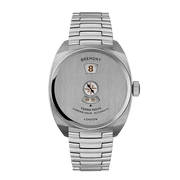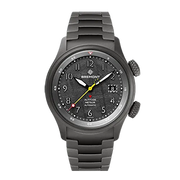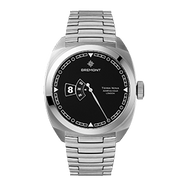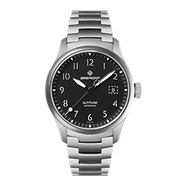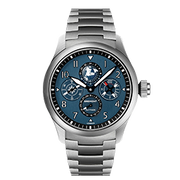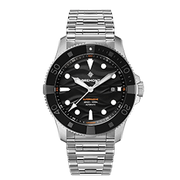This was all very new to me. Owning and wearing a bronze watch was something I had never tried before. The ‘bronze age’ for my watch ownership had finally arrived as I was able to test out the latest watch to be added to our Bremont collection, the Broadsword Bronze.
There has been a lot of interest in this watch, mainly based on the Broadsword being part of the Armed Forces Collection and it’s proven popularity to date. Bronze has a military pedigree and I was fascinated to understand how the material would wear and transform on my wrist over time. Bronze is a ‘living’ material, and CuSn8 Bronze is a very pure and strong alloy with an 8% tin content. It is the dominant copper content which allows the wonderful patina to develop over time as it oxidises, creating a layer of brownish copper oxide that protects it from the elements - it really does have this living skin. CuSn8 has been known to take on a deep brown patina, whereas there is also an aluminium bronze that often becomes a lighter and more reddish shade of brown.
I picked up one of the prototype Broadswords from our Henley workshop to put it to the test. The watch case had recently had an Anti-Fingerprint Coating (AFC) applied to it; this coating allows the watch to stay in a retail environment for a short while before hitting the elements. Quite quickly I began to see a change in the case finish. From an almost rose gold like bronze colour, the watch started to take on a more brown hue, certainly duller and less shiny. I was fascinated by the change. The next day I was off on a family holiday to the Mediterranean and was rather excited about the possibility of submersing my new timepiece in the salty seawater. A stainless steel case remains the same indefinitely, but with bronze who knows, I couldn’t wait to see what would happen.
Day 1
I arrived at my holiday destination and, before any submersion in water, the watch had already started to turn from an almost rose gold to a brown colour. It was also possible to see where, in slight patches, the AF coating was starting to come off.

Day 2
The watch started getting some salty seawater action.

Day 3
The watch continued to darken into a rich tanned brown hue, I remain fascinated at what was happening. The watch had been in the sea, but had also been exposed to quite a lot of fresh water during the day. My nature obsessed son decided to dig out scores of scorpions around the garden which led him to taking some still life watch shots for me. The deep brown can be clearly seen.

Day 8
The watch continued to darken and the final parts of the AF coating seemed to be coming off. I put it in less fresh water and noticed that there was even a bit of green coming out in the case colour from the copper content gently oxidising. The watch was starting to look really marvellous, almost like a timepiece I had recovered from a WW2 battleship. It made me smile just looking at it.
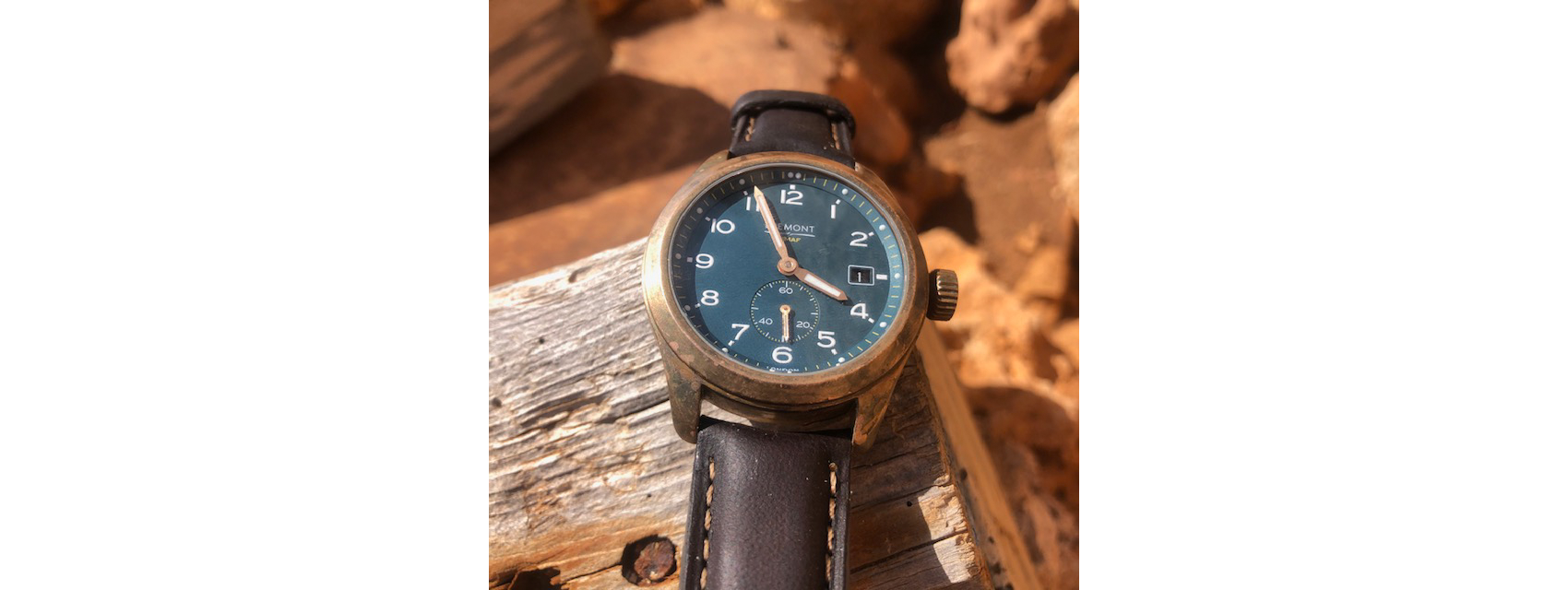
Day 10
The exposure to saltwater continued and the watch was looking fantastic, even the crown developed a wonderful patina.

Day 12
I started using the watch in fresh water a little more and something interesting began to happen. The watch started to lose its green patina and go back to the colouring it had on day three to five. I didn’t know whether to be upset or delighted?! It still looked great, just different.

Day 20
Having been back at home for a while, I wore the watch continuously just without the same exposure to the sea and the elements as you might expect. Interestingly, the patina that was once on the watch had almost started to rub off. I hadn’t realised that was possible, but the real bronze from ‘below’ started to gleam through in all its glory. It felt as if I had been wearing five or six different watches over the course of about two or three weeks, I loved it. I now need to head back to the Mediterranean as soon as possible to start the ageing again! Some hope.








